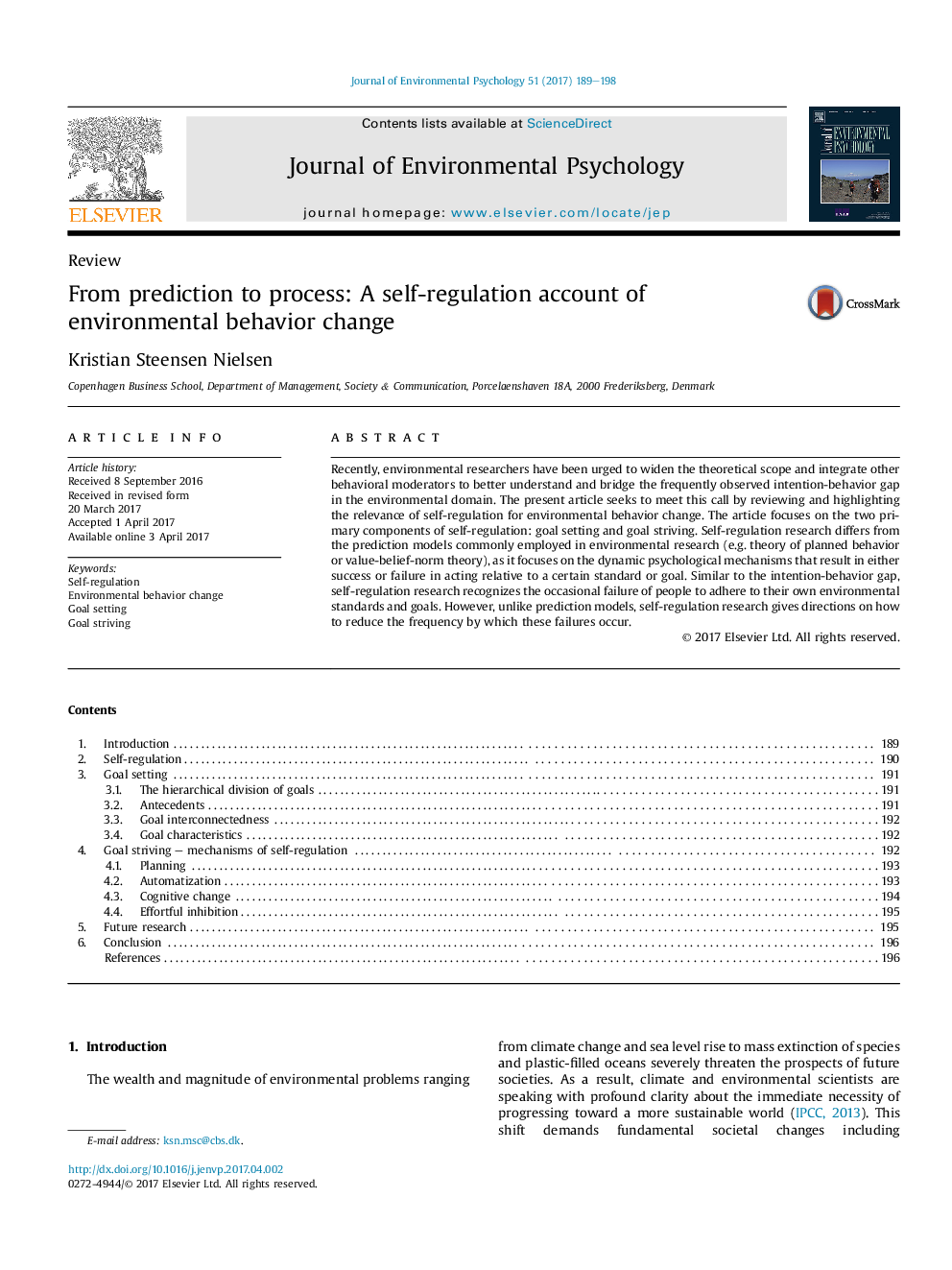| Article ID | Journal | Published Year | Pages | File Type |
|---|---|---|---|---|
| 5034850 | Journal of Environmental Psychology | 2017 | 10 Pages |
Abstract
Recently, environmental researchers have been urged to widen the theoretical scope and integrate other behavioral moderators to better understand and bridge the frequently observed intention-behavior gap in the environmental domain. The present article seeks to meet this call by reviewing and highlighting the relevance of self-regulation for environmental behavior change. The article focuses on the two primary components of self-regulation: goal setting and goal striving. Self-regulation research differs from the prediction models commonly employed in environmental research (e.g. theory of planned behavior or value-belief-norm theory), as it focuses on the dynamic psychological mechanisms that result in either success or failure in acting relative to a certain standard or goal. Similar to the intention-behavior gap, self-regulation research recognizes the occasional failure of people to adhere to their own environmental standards and goals. However, unlike prediction models, self-regulation research gives directions on how to reduce the frequency by which these failures occur.
Related Topics
Social Sciences and Humanities
Psychology
Applied Psychology
Authors
Kristian Steensen Nielsen,
